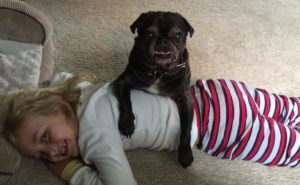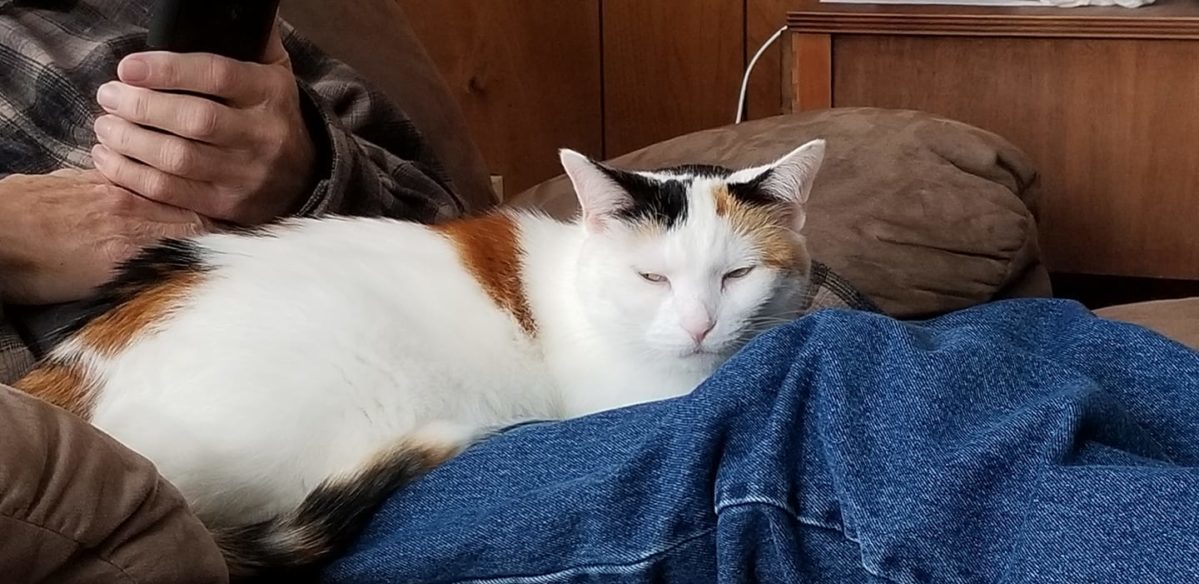We love our dogs and cats. Mine are as much members of the family as my wife and children and my granddaughter Reagan. But do they love us back?
I think so, and I think they show us that love—and we show it to them–in myriad ways individual to each pet and person.
Body language and the choices they make are among the ways our pets show that they love us. We can return their gift using similar signals. Here’s what to look for from your dog or cat and how to express your own feelings in ways they will understand.
The Mirrors of the Soul
In dogdom, the act of locking eyes can signal aggression. Polite dogs don’t stare—either at other dogs or at humans. But when they are comfortable and happy in our presence, they accept our looks of love and will even seek out eye contact from us. They return our gaze with a relaxed expression that says, “All is right with the world.”
Cats also consider staring a rude behavior, but they send other signals with their eyes. If your cat slowly blinks at you, rejoice! You’re the recipient of a sweet kitty kiss. You can slowly blink back to return the salute.
Tail-Wagging Good
Lots of people think that tail wags are always friendly gestures, but they can have many different meanings, and not all are nice. But when our dogs give a full-body wag with the tail held at mid-height, the message is clear: they’re happy and excited to see the person they love.
Cats don’t wag their tails in the same way that dogs do. In fact, if you see a cat rapidly swishing her tail from side to side, step back! She’s not in a friendly mood. But a cat whose tail is upright or moving languidly is happy and willing to interact with you.
When your pet expresses happiness at seeing you in this way, you don’t have to wiggle your butt back at him, but you can respond to his desire for interaction by slowly and gently petting him in areas where he enjoys being touched. For most animals, those spots include beneath the chin, at the base of the ears, or on the chest, shoulders, and side.
Your cat or dog may invite your attention by jumping into your lap or presenting you with the area where he wants to be stroked. If he does, appreciate his invitation to engage in a mutually beneficial social ritual.
Keep in Touch
Touch is an intrinsic part of any loving relationship, whether it’s between animals of the same or different species—including cats, dogs, and humans. There’s nothing so satisfying as sitting with a cat in your lap or a dog snuggled at your side. When cats and dogs choose to be physically close to us, whether by placing a paw on our knee or sleeping with their head on our feet, it’s a true sign of affection.
humans. There’s nothing so satisfying as sitting with a cat in your lap or a dog snuggled at your side. When cats and dogs choose to be physically close to us, whether by placing a paw on our knee or sleeping with their head on our feet, it’s a true sign of affection.
You can return the love not only through petting or snuggling, but also by brushing or combing your pet in a relaxed, gentle manner. Social grooming is what friends do together. It helps to establish and maintain the bonds of companionship and even has health and emotional benefits. Touch should be calming and therapeutic for both pets and people, each reaping the mutual benefits of shared contact.
This article was reviewed/edited by board-certified veterinary behaviorist Dr. Kenneth Martin and/or veterinary technician specialist in behavior Debbie Martin, LVT.








